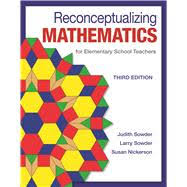
Dynamic Geometry Modules
This series of applet investigations is designed to support explorations of polygons to determine which properties remain constant even as vertices are dragged. All of the dynamic sketches were created with Geogebra, a free online software program that has modules for creating integrated dynamic geometry sketches, spreadsheet operations, 3-D graphing and constructions, and CAS simulations. See www.geogebra.org.
Click on the “+” toggle to explore each set of investigations.
Investigation Set 1: Special Triangles
Sketch 1: An equilateral triangle. Move points A and B to determine the properties of this sketch.
Sketch 2: What kind of triangle is this? Move points A and B to determine the properties of this sketch.
Sketch 3: What kind of triangle is this? Move points A and B to determine the properties of this sketch.
Investigation Set 2: Constructions of Parallelograms
Sketch 1: Constructing a parallelogram. We can make sketches based on definitions used in proofs. There are five common sets of parallelogram properties. Which set was used to create the yellow sketch 1?
- A quadrilateral with two sets of opposite sides parallel.
- A quadrilateral with two sets of opposite sides congruent.
- A quadrilateral with one set of opposite sides that are parallel and congruent.
- A quadrilateral with diagonals that bisect each other.
- A quadrilateral with adjacent angles that are supplementary.
Sketch 2: Which of the sets of properties from the list above was used to create each of the following sketches?
Sketch 3: Which of the polygons below are actually parallelograms? That is, which pass the “drag test” for parallelograms? Which ones have construction “errors”?
Sketch 4: The construction below is called a “Midpoint Quadrilateral”. It was constructed by connecting the four midpoints of a general quadrilateral. What special quadrilateral is formed by the midpoint segments? Use the hints to make an argument that supports your hypothesis.
Investigation Set 3: Other quadrilateral investigations
Other special quadrilaterals–
Sketch 1: A kite.
Sketch 2: A trapezoid.
Investigation Set 4: Transformation Geometry
This first exploration provides an overview of three types of transformations: Reflections, rotations, and translations. Click to reveal the image formed under each transformation given the green pre-image shown to start.
Reflection Challenge 1: use the pencil to sketch where you think the pre-image will land when reflected across the line shown. Then click to reveal the answer and show how close your hypothesis was! You can move the line of reflections and try different challenges. Click the “reset” icon (two arrows in upper right corner)
Reflections Challenge 2: Move the end points of the orange line of reflection to indicate where the actual line must be.
Rotation Challenge 1
Rotation Challenge 2: Try to find where the center of rotation is.
Translation Challenge: